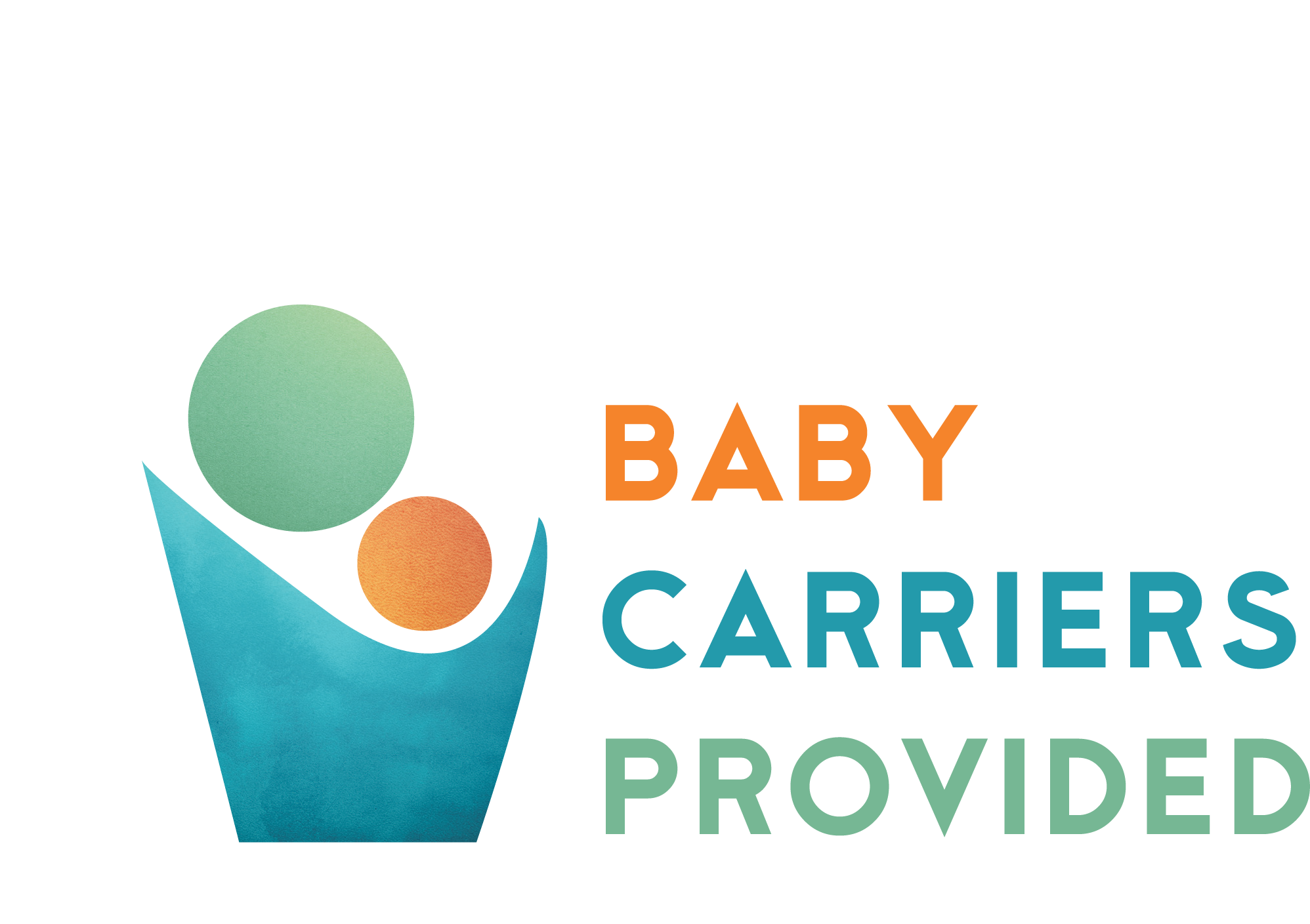Research
Pioneering baby carrier public health research.
Where is the evidence?
Currently, adjacent skin-to-skin research exists in the realm of kangaroo care and neonatal intensive care. There is also ample research pertaining to physical contact, infant mental health, and attachment. Baby Carriers Provided aims to generate scientific data, through our educational programming and carrier distribution, that will provide conclusive evidence to support the use of carriers as a critical intervention.
Areas of intended research:
- Breastfeeding
- Crying
- Abuse and neglect (including abusive head trauma)
- Accident and incident
- Attachment
- Family preservation
- Therapeutic effects
Current statistics and resources
Bass, Joel MD, and Mehta, Kishor MD “Oxygen Desaturation of Selected Term Infants in Car Seats” Pediatrics Vol. 96 No. 2 August 1995, pp. 288-290
Bass, Joel L. MD “O2 Saturation and Slings” Pediatrics Vol. 110 No. 5 November 2002: pp. 879-883
Zeedyk, Susanne. Literacy trust stroller study.
Blois, Maria. Babywearing: The Benefits and Beauty of this Ancient Tradition.
Larimer, Krisanne. Benefits of Kangaroo care on prematurity.org
Kirkilionis, E. (1999). Ein Baby will getragen sein. München: Kösel, 7. Auflage.
Schrader, A./ Manns, A. Ins Leben tragen – Entwicklung und Wirkung des Tragens von Kleinstkindern unter sozialmedizinischen und psychosozialen Aspekten: Berlin: VWB, 1995.
Hassenstein. Der biologische Typus des menschlichen Säuglings.
Anisfeld, E. V. Casper, M. Nozcye, N. Cunningham. Does Infant carrying promote attachment? An experimental study of the effects of increased physical contact on the development of attachment. Child Dev. 1990. Oct. 61(5):1617-27.
Hunziker, Urs A. & R.G. Barr. Increased Carrying Reduces Infant Crying: A Randomized Controlled Trial.
Barr, R.G., S.J. McMullan, H. Spiess, D.G. Leduc, J. Yaremko, R. Barfield, T. E. Francoeur, Urs A. Hunziker. Carrying as Colic “Therapy”: A Randomized Controlled Trial. Pediatrics.1991; 87: 623-630.
Amaral, Lia Q. Mechanical analysis of infant carrying in hominoids. Naturwissenschaften. 2008 April; 95(4): 281–292.
Wall-Scheffler, C.M., K. Geiger, & K.L. Steudel-Numbers. Infant carrying: The role of increased locomotory costs in early tool development. American Jounal of Physical Anthropology. Volume 133, Issue 2, pp 841-846. June 2007.
Schön, R.A. & Silvén, M. Natural Parenting- Back to Basics in Infant Care. Evolutionary Psychology. 2007 5(1): 102-183.
http://www.jpeds.com/pb/assets/raw/Health%20Advance/journals/ympd/JPEDSBatra.pdf
CORRECT POSITIONING: For the Safety & Comfort of your Newborn in a baby carrier http://www.thebabywearer.com/articles/HowTo/Positioning.pdf
A Comparison of Respiratory Patterns in Healthy Term Infants Placed in Car Safety Seats and Beds http://pediatrics.aappublications.org/cgi/content/abstract/124/3/e396
The Effect of Chronic or Intermittent Hypoxia on Cognition in Childhood: A Review of the Evidence http://pediatrics.aappublications.org/cgi/content/abstract/114/3/805
Oxygen Desaturation of Selected Term Infants in Car Seats http://pediatrics.aappublications.org/cgi/content/abstract/96/2/288
Respiratory Instability of Term and Near-Term Healthy Newborn Infants in Car Safety Seats http://pediatrics.aappublications.org/cgi/content/abstract/108/3/647
Safe Transportation of Preterm and Low Birth Weight Infants at Hospital Discharge http://pediatrics.aappublications.org/cgi/content/full/123/5/1424
Simple Car Seat Insert to Prevent Upper Airway Narrowing in Preterm Infants: A Pilot Study http://pediatrics.aappublications.org/cgi/content/abstract/112/4/907
Use of Seating Devices in Infants Too Young to Sit
http://archpedi.ama-assn.org/cgi/content/abstract/151/3/233

